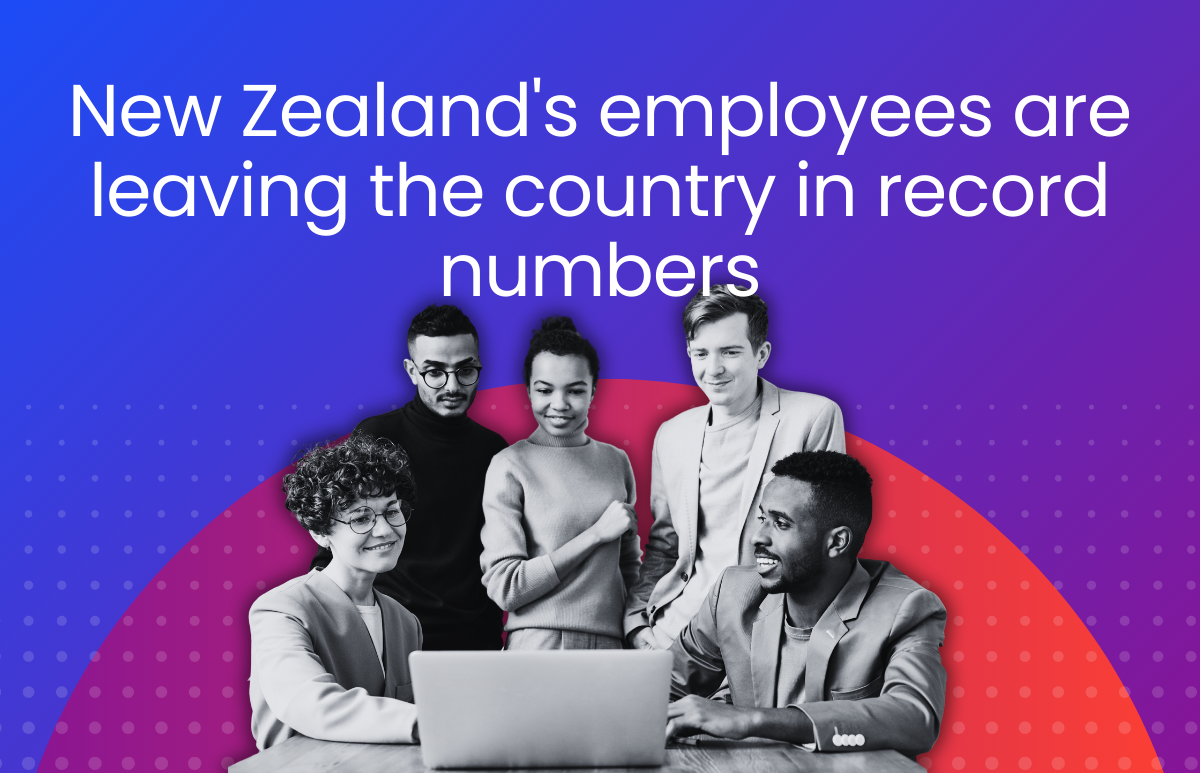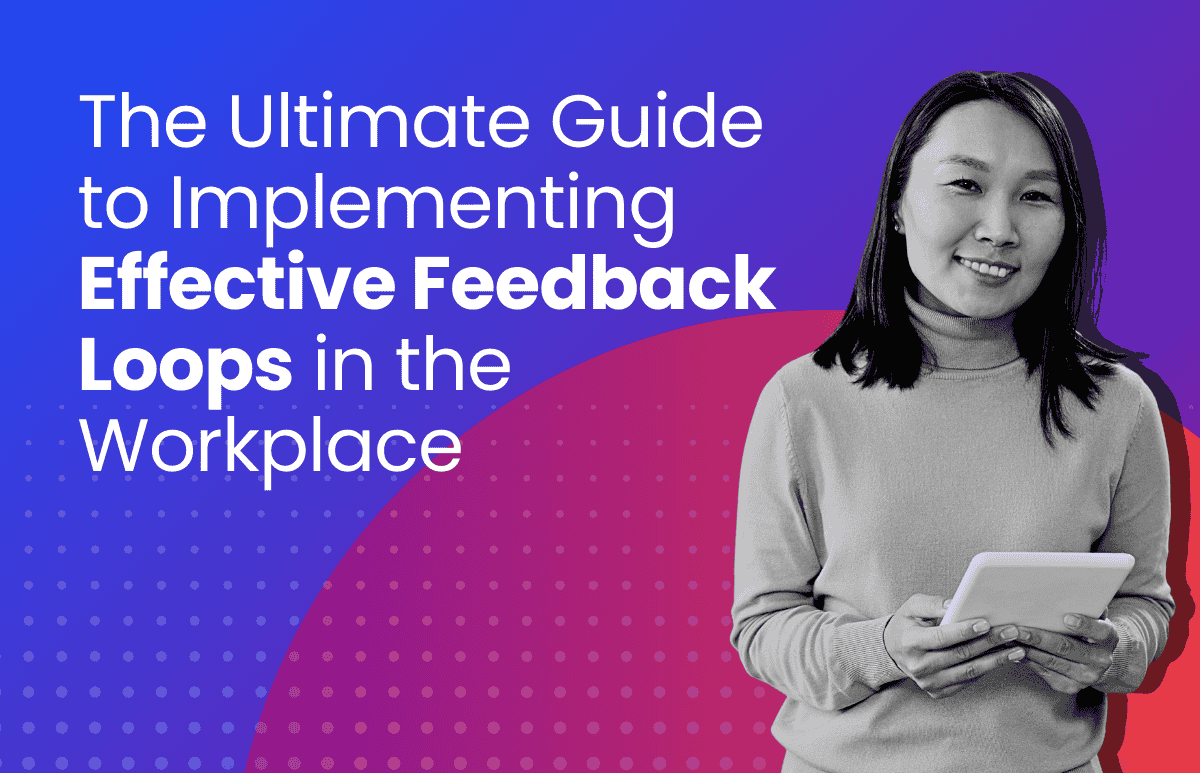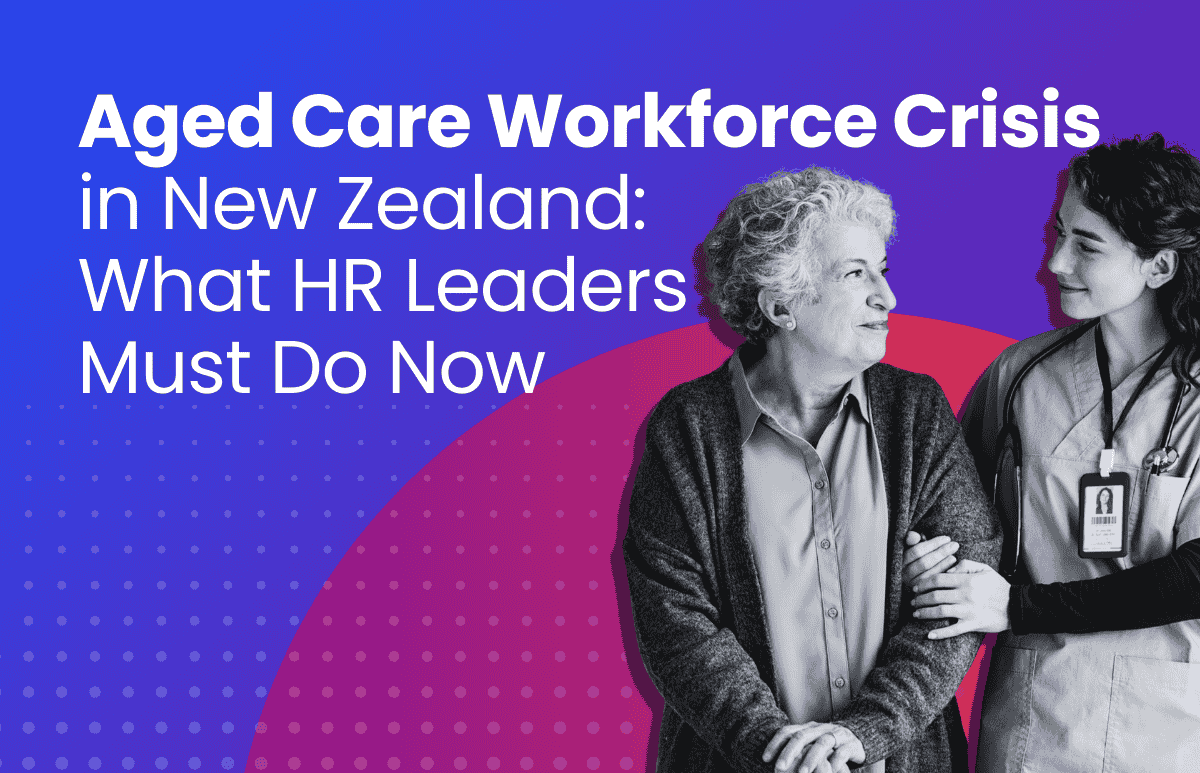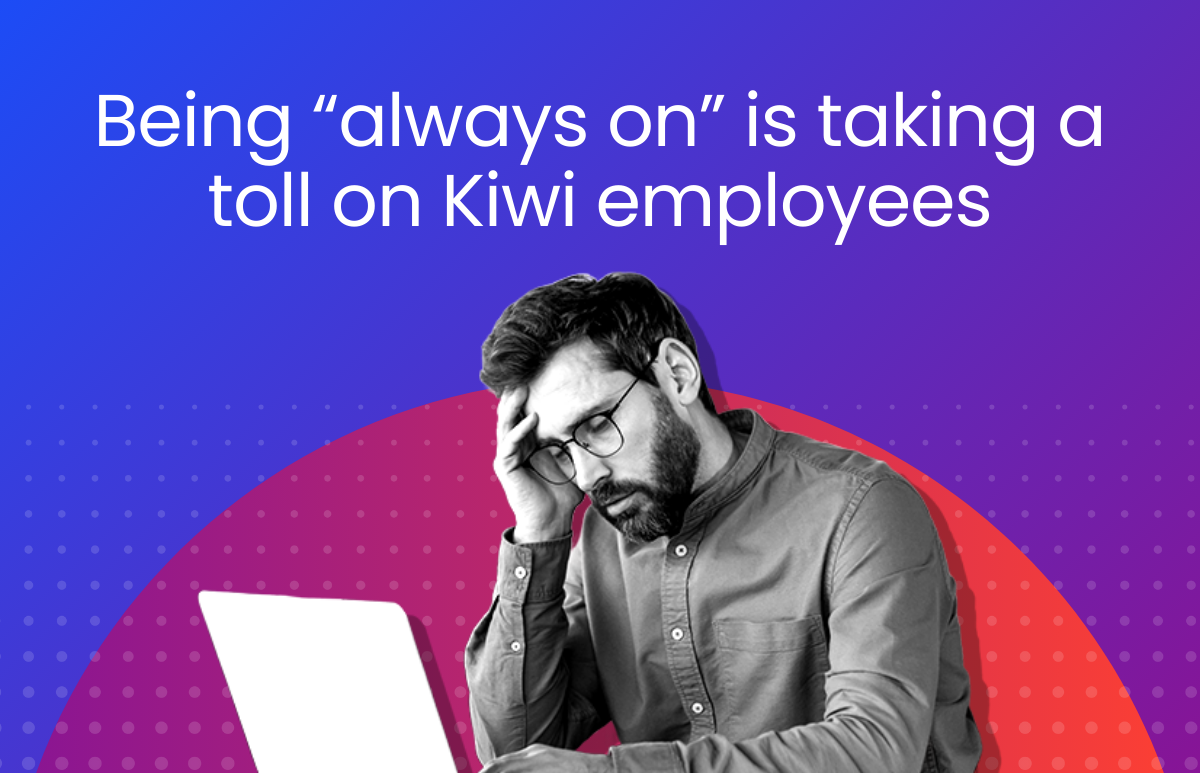New Zealand’s employees are leaving the country in record numbers
New Zealand is facing its biggest talent drain in decades, with over 69,000 citizens heading offshore over the last year. Adapting to the mass departure of Kiwi talent means HR leaders must act now before the talent vacuum becomes impossible to ignore.

New Zealand is facing one of the largest departures of its citizens in recent history. In Feb 2025, migrant arrivals for the year were down 30%, while migrant departures were up 15%.
Over 69,000 Kiwis left the country in the year leading up to February 2025, with more than half heading to Australia. While Kiwis have long crossed the Tasman in search of adventure and opportunity, what’s unfolding now is a different beast. We’re not just talking about younger backpackers, but also families, skilled professionals, and those who contribute significantly to the overall economy and workforce.
These aren’t just stats, these are warning signs that businesses and HR professionals should be paying attention to.
Why are Kiwis leaving?
Economic pressures seem to be topping the list when it comes to the reasons for mass departure. As many will know, New Zealand’s cost of living has soared in recent years. Median rents and mortgage payments are outpacing wages and it’s getting harder to make ends meet.
In fact, we found in our 2025 Employee Sentiment Index that over half of Kiwi employees (53%) feel their income is insufficient, with one in five (18%) stating they are nowhere near meeting their and their family’s financial needs.
Meanwhile, although these economic pressures have certainly raised their head in countries like Australia, Kiwis can still find an advantage in making the move, seeking a better wage to living ratio.
This mass movement is creating a possible ‘talent vacuum,” especially in smaller towns and regions.
As one New Zealand mayor put it, “we are being hollowed out.” Schools are closing due to falling enrolments. Employers are struggling to fill critical roles. Public services are strained and businesses that rely on local skills are finding it harder to retain and attract the people they need.
“This is not a good news story for provincial and small town Aotearoa and it’s happening gradually, town by town and region by region,” says Tahu Kukutai, a demographer and co-director for Māori research centre Ngā Pae o Te Maramatanga.
As put forward by leading sociologist and professor Paul Spoonley from Massey University, “I don’t know why we’re not talking about this more. We have a steep decline in fertility, a rapidly ageing population, and, out of Covid, we are seeing the rise and rise of departures, (…) Parts of New Zealand are beginning to empty out, they will suffer stagnation or are in decline”.
For HR leaders it’s a present-day risk to workforce stability.
What can HR teams do about it?
So what’s to be done? There’s no quick fix here, but moves can be made. While steering the course of the economy is not on the cards for HR, there’s always measures you can take to compete for the best talent and reduce attrition.
1) Get a bit more radical with remote work
While flexible working has been widely embraced and many organisations are settling into their hybrid preferences, those that get bolder with remote working will win out here. Not only does it open up a huge workforce, with far less overheads, it draws in a pool of talent you would not normally have access to – from around the country and the globe.
2) Be mindful of your internal flight risks
The situation is pretty much the epitome of ‘flight risk’. You can start by identifying your most vulnerable roles and teams. Are you seeing subtle signs of disengagement or despondency? Are your high performers at risk of burnout, stagnation or being poached? You can use flight risk prediction models, ‘stay’ interviews, and turnover trend analysis to uncover identifiable flight risks that are ripe for intervention.
3) Address attrition head on
Based on current trends, the following reasons are contributing most to employee departures in Aotearoa.
- Cost of living vs. pay issues
- Limited career progression
- Lack of flexibility
- Perceived leadership gaps
- Quality of life trade-offs
HR has a critical role to play in shaping organisational responses to these realities, from informing remuneration strategies to redesigning work structures and coaching leadership teams on how to retain top talent.
4) Reimagine roles with retention in mind
Job redesign isn’t just about efficiency, it can also be a pretty potent retention strategy.
Are your high performers getting fresh opportunities? Are people working on projects that matter to them? Are you enabling autonomy, mastery, and purpose?
Take a closer look at what motivates your people and not just what the job requires. Consider piloting “portfolio-style” job structures or offering project-based internal mobility options. Not every employee wants to climb a linear ladder. Many are looking for breadth, balance, and meaning.
5) Embrace immigration strategically
While talent is leaving New Zealand shores in larger numbers, there’s also incoming migration to consider. This certainly presents an opportunity, but should be treated purposefully as bringing in offshore talent isn’t a quick fix.
Luckily though, substantial changes to New Zealand’s Accredited Employer Work Visa scheme are helping trim the red tape and make it less onerous for Kiwi businesses to hire talent from overseas.
To make it work, you’ll need to ensure onboarding, inclusion, and development are executed well. If you do, you can embrace a broad pool of excellent global talent that could serve you well.
6) Create an even more compelling employer value proposition
You likely have one but it’s worth revisiting it. This moment is an opportunity for organisations to redefine what they stand for and why people should stay. Ask yourself:
- What’s your retention pitch beyond salary?
- Are your people proud to work for you?
- Does your company offer a modern work environment?
- How are you faring on wellbeing support?
- Do you offer career development that keeps people motivated to stay?
- How flexible are you?
The organisations that win in this climate will be those that can offer more than just a job — they’ll offer purpose, community, flexibility and growth.
The HR opportunity
Yes, the current emigration wave poses challenges. But it also pushes employers to sharpen their retention strategies and genuinely listen to their people. The “Kiwi brain drain” is real, but it doesn’t spell doom either. Not if you take a proactive, people-first approach.
This is a call to HR leaders to:
- Embed flight risk assessment into workforce planning
- Champion leadership development and career pathing
- Engage more directly in employee satisfaction and communication
- Rethink compensation and benefits, including performance bonuses
- Foster a stronger culture of belonging and recognition
- Leverage data to make timely, informed decisions
- Rethink stringent remote working policies
New Zealand’s talent landscape is clearly shifting fast. The question for HR is whether you’ll get ahead of it?
 HR Core
HR Core 









